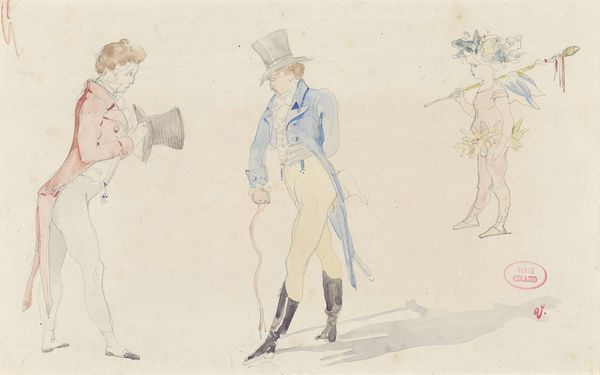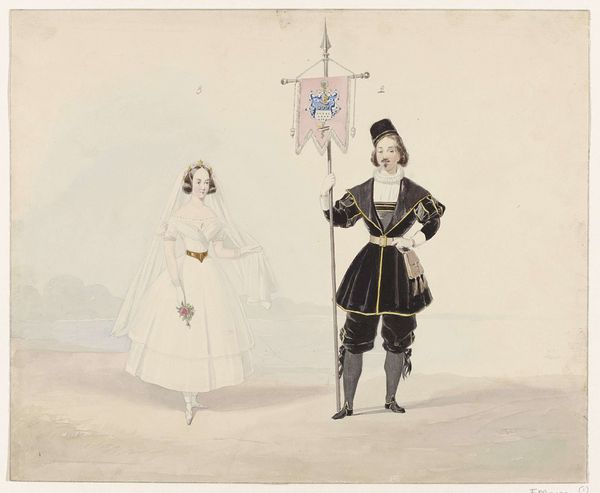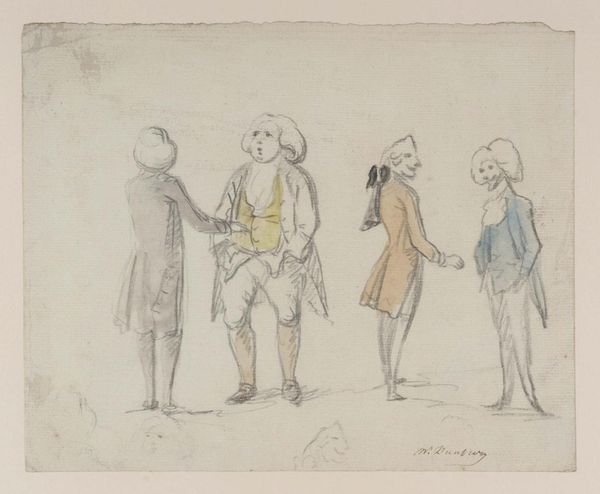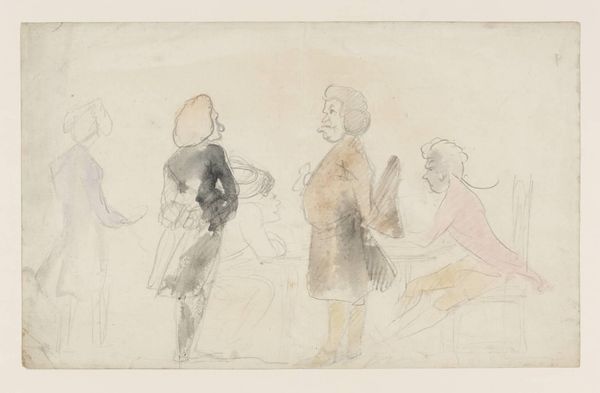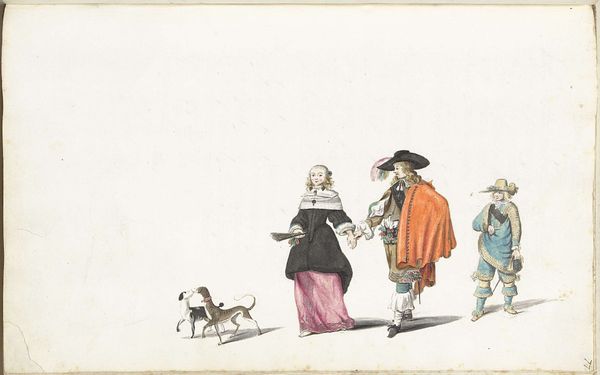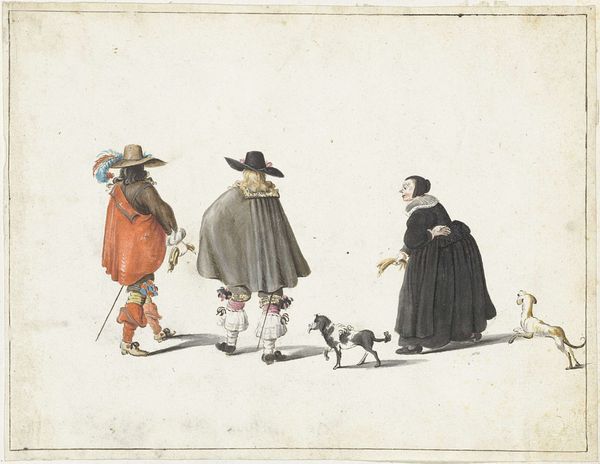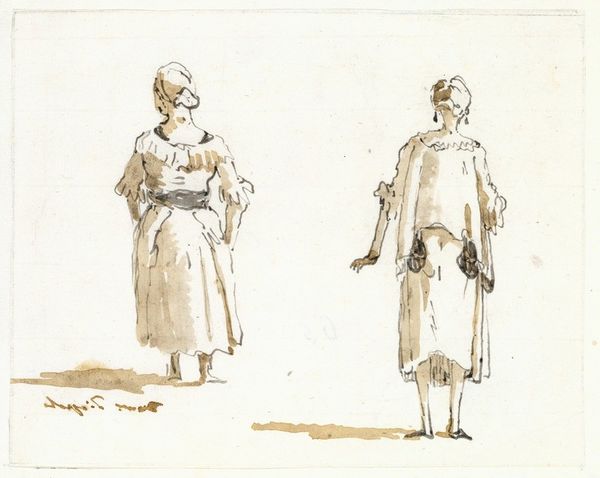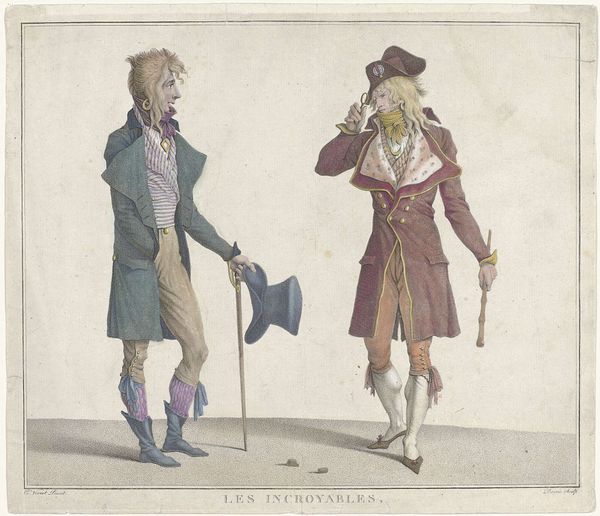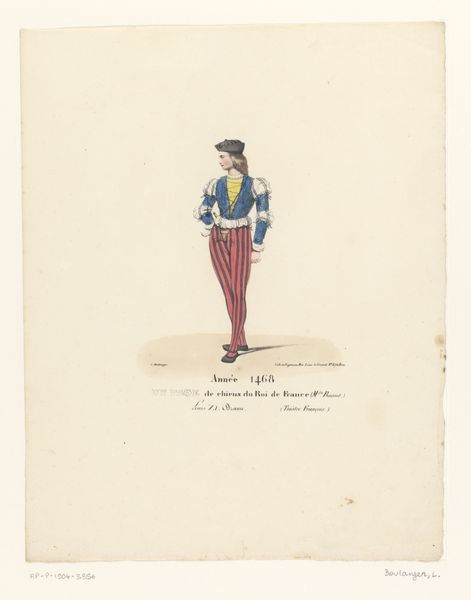
drawing, watercolor
#
portrait
#
drawing
#
watercolor
#
historical fashion
#
romanticism
#
watercolour illustration
#
genre-painting
#
history-painting
#
academic-art
Dimensions: height 322 mm, width 400 mm
Copyright: Rijks Museum: Open Domain
Curator: Welcome. Before us is "Twee mannen in historisch kostuum," or "Two Men in Historical Costume," created by Huib van Hove Bz in 1841. It’s a drawing, rendered in watercolor. Editor: It strikes me as remarkably stiff. These figures, despite their historical finery, seem detached, almost like paper dolls against the blank backdrop. Curator: And that’s quite telling. In 1841, Romanticism was in full swing, emphasizing emotion and historical grandeur. Here, we have a fascination with historical costume – it signals a renewed interest in the past, but perhaps a superficial one. Notice the detail in the attire. Editor: Absolutely. It's a record, almost. You can see how power and status are visually communicated through these clothes. Who they were meant to be. Though why choose to memorialize this kind of European power at this time? What audience was supposed to be empowered by these types? Curator: Likely it speaks to the broader nineteenth-century preoccupation with national identity. Looking to historical precedents to construct a cohesive narrative. Images like these were often commissioned by wealthy patrons, affirming their ties to the aristocracy, even as the political landscape shifted. It’s not just history, but a carefully curated history that justifies social structures. Editor: And who gets to tell the story, right? Notice the absence of the labor it took to create these garments, or who these men exploited in the pursuit of glory. They look as if extracted from the real historical mess and presented in an an aseptic frame of mind. I wonder how to reframe this in a way that shows what it tried to hide. Curator: It invites a critical perspective on the era. Examining the layers of meaning embedded within the portrayal of the historical figure is a start, because after all this work represents a complex network of power, memory, and representation, not a simple illustration of "history". Editor: Absolutely. It gives a new urgency to re-interrogate artworks. It helps deconstruct myths, examine the undercurrents and question the legacy itself.
Comments
No comments
Be the first to comment and join the conversation on the ultimate creative platform.


